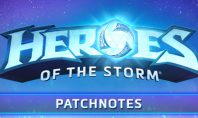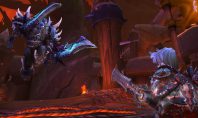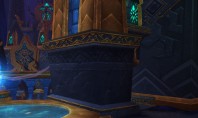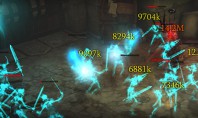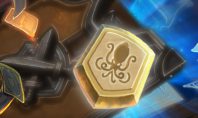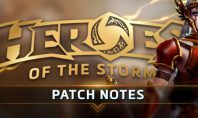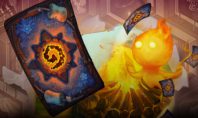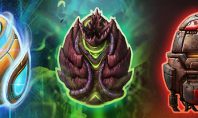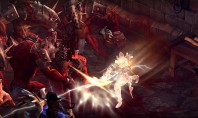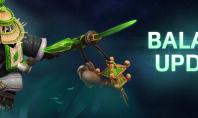Heroes: Eine Erklärung zu der neuen Panzerung
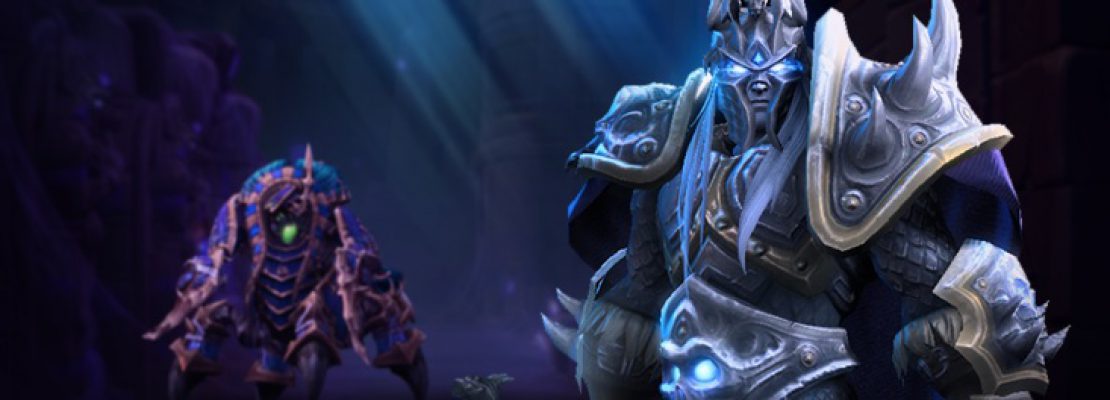
Mit dem in der vergangenen Woche auf die Liveserver von Heroes of the Storm aufgespielten neuen Content Patch haben die Entwickler unter anderem dafür gesorgt, dass die Charaktere „Arthas“, „Anub’arak“ und „Graumähne (Worgenform)“ nun standardmäßig eine sogenannte Grundpanzerung besitzen, die erlittenen Schaden automatisch um einen bestimmten Wert verringert. Passend zu dieser Änderung an diesen drei Helden veröffentlichten die Mitarbeiter von Blizzard Entertainment vor Kurzem dann auch noch einen neuen Blogeintrag auf der Communityseite ihres Team Brawlers, der den Spielern ganz genau erklären soll, wie diese Panzerung eigentlich funktioniert und warum sie überhaupt in Heroes of the Storm eingebaut wurde. Wer sich diesen Artikel der Entwickler nicht selbst durchlesen möchte, der findet folgend eine kurze Zusammenfassung der wichtigsten Informationen zu diesem Thema.
Zusammenfassung des Blogeintrags:
- Die Panzerung ersetzt das bisher im Spiel vorhandene Verwundbarkeits- und Schadensmitigationssystem. Fähigkeiten oder Talente, die früher eine dieser beiden Mechaniken erwähnten, sollten sich nun mit Panzerung beschäftigen.
- Es gibt drei verschiedene Arten von Panzerung.
- Normale Panzerung: Reduziert allen erlittenen Schaden um einen bestimmten Wert.
- Zauberpanzerung: Reduziert nur allen erlittenen Zauberschaden um einen bestimmten Wert.
- Physische Panzerung: Reduziert nur allen erlittenen physischen Schaden um einen bestimmten Wert.
- Jeder Punkt an Panzerung gewährt dem Helden 1% Schadensmitigation.
- Mehrere Einheiten der gleichen Panzerung können sich stapeln.
- Die Caps für Panzerung liegen jeweils bei -25 und +75. Einige Fähigkeiten wie beispielsweise die Antimagische Hülle von Arthas ignorieren diese Caps bewusst.
- Sollten ein Spieler zwei Buffs oder Debuff erhalten, die beide die Caps der Panzerung überschreiten, dann wird nur der stärkere der beiden Effekte aktiv bleiben.
- Fähigkeiten, die prozentualen Schaden verursachen, ignorieren die Panzerung komplett und fügen Zielen immer vollen Schaden zu.
- In der Zukunft sollen weitere Helden eine Grundpanzerung erhalten. Aktuell überprüfen die Entwickler noch, bei welchen Charakteren solch eine Anpassung auch wirklich Sinn machen würde.
Explaining the new Armor system
Our newest patch introduced a brand new system to the Nexus. Well, new isn’t quite the right term, as it has actually been a fundamental part of the game for a long time, but under a different name. This post will try to briefly and clearly explain what’s different under the new “Armor” system.

What is Armor?
- Armor is an all-encompassing term that we‘re using to replace the Vulnerable/Resistant system that previously existed in the game. If an ability or talent previously referred to Resistant or Vulnerable effects, it will now state that it grants an addition or reduction of “Armor” instead.
How does Armor work?
- Armor is split into three types: Armor, Physical Armor, and Spell Armor. Armor by itself means that you gain mitigation from both Physical and Spell damage. Physical and Spell Armor mitigate damage from their respective key words. Currently, all abilities deal Spell Damage while all Basic Attacks deal Physical Damage (with slight exceptions like the talent Cannoneer, which turns Li Ming’s next Basic Attack into Spell Damage). For reference, floating damage text will display Spell Damage as purple numbers above the target’s head, while Physical Damage will display as orange.
- As of the Varian patch, abilities and talents that grant Armor now stack additively. There were a lot of ways that we could have designed this, but in order to keep the system as simple as possible, we decided to make each point of Armor directly relate into 1% resistance. Technically, this means that each additional point of armor is slightly more valuable than the last, and in order to keep that in check we created lower and upper Armor Caps of -25 and +75, respectively. The reasoning and thoughts behind doing this were outlined by Matthew Cooper in this post.
Exceptions and Interactions
- You will notice that there are a couple of talents that can raise or lower Armor past their respective caps. Things such as Nazeebo’s Superstition (-30 Physical Armor) or Arthas’ Anti-Magic Shell (+100 Spell Armor) are specifically flagged to ignore the caps, but function identically to the rest of the system. Abilities that ignore Armor Cap are currently rare, but in the future we may implement more abilities and talents that bend the rules. In the case that two different effects are both ignoring the Armor Cap, the larger one will take priority.
- As an example, let’s say you are playing Nazeebo and picked up Superstition (-30 Physical Armor, +50 Spell Armor) and then receive a Pixie Dust (2 stacks of +75 Physical Armor) from Brightwing. You would now currently have 45 Physical Armor (-30 + 75 = 45) against the next two Physical damage sources.
- Again, let’s say you have Superstition (-30 Physical Armor) and are hit by Tyrande’s Hunter’s Mark (-25 Armor). You would now have -30 Physical Armor (already at/past Armor Cap) and 25 Spell Armor (50 – 25 = 25).
- Percentage based damage is now flagged to ignore the Armor system entirely. This means that your Giant Killer (+1.5% Max health damage per attack) will do full damage to your target regardless of their current Armor state.

We realize that you will definitely have more questions about this system and are doing our best to make it as clear and transparent as possible. We are currently working on several ways to better explain the system to players both in and out of game, and are actively listening to your suggestions and feedback. While this might seem like a big change, rest assured that the balance team is patiently watching the state of the game and are ready to make any changes necessary to keep the game as balanced and polished as possible as we continue to roll this new system out.



